Cal Poly student Kristin Smart went missing 23 years ago. Here’s what happened since
Update: Who is Paul Flores? Here’s the ‘person of interest’ in missing Kristin Smart’s case
• • •
Kristin Smart, a 19-year-old Cal Poly freshman from Stockton, disappeared early on the Saturday morning of Memorial Day weekend in 1996, after leaving a house party just off campus. She would have turned 43 years old in 2020.
Though the case has long remained unsolved, a podcast series hosted by Orcutt resident Chris Lambert has sparked renewed interest in the community — as well as calls to search the Arroyo Grande property of Susan and Ruben Flores, parents of the only suspect in Smart’s disappearance.
Paul Flores, who was also a Cal Poly student in 1996 and now resides in San Pedro, was the last person seen with Kristin Smart, who was officially declared deceased in 2002.
Here’s a detailed timeline of Smart’s disappearance and the investigation into her missing person case.
Timeline of Kristin Smart missing person case
May 25, 1996: Kristin Smart is last seen around 2 a.m. walking with students Paul Flores and Cheryl Anderson from a party at 135 Crandall Way near the Cal Poly campus in San Luis Obispo. Anderson separates from Smart and Flores at the intersection of Perimeter Road and Grand Avenue.
May 27, 1996: Student Jennifer Phipps calls Cal Poly police to report Smart missing. A report is not started at that time.
May 28, 1996: Phipps calls the San Luis Obispo Police Department to report Smart missing. A report is started and Phipps is referred to the Cal Poly Univerity Police Department. Cal Poly police take a missing person report, which is the first time Smart’s parents, Stan and Denise, learn anything is amiss. Paul Flores is interviewed for the first time. He tells a campus officer that he and Smart separated near the Santa Lucia Hall, and that he hasn’t seen her since.
May 30, 1996: Campus investigators Ray Barrett and Mike Kennedy interview Flores at their office. Meanwhile, the first of several searches for the missing student is conducted on campus.
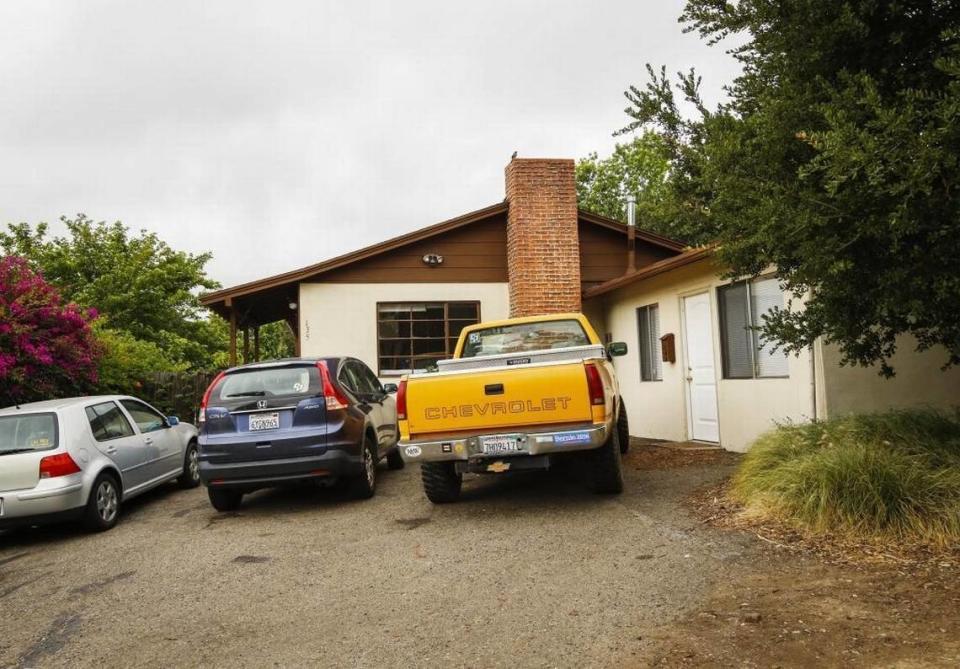
May 31, 1996: Campus police follow up on several alleged sightings of Smart, a 6-foot 1-inch blonde woman. San Luis Obispo County District Attorney’s office investigators Bill Hanley and Larry Hobson interview Flores at the Cal Poly Police Department.
June 5, 1996: Cal Poly Police Det. Mike Kennedy searches Smart’s dormitory room for evidence and seizes the room’s contents for safekeeping.
June 10, 1996: Campus investigator Kennedy secures Flores’ dorm room at Santa Lucia Hall after he and his roommate have moved out. None of Flores’ property is found in his room.
June 19, 1996: District Attorney’s investigators Hanley and Hobson interview Flores at the Arroyo Grande Police Department. During the videotaped interview, Flores tells investigators that he lied when he previously stated he received a black eye playing basketball. He says he actually received the injury while working on his truck. Flores abruptly walks out of the interview before it concludes and says he won’t answer any more questions.
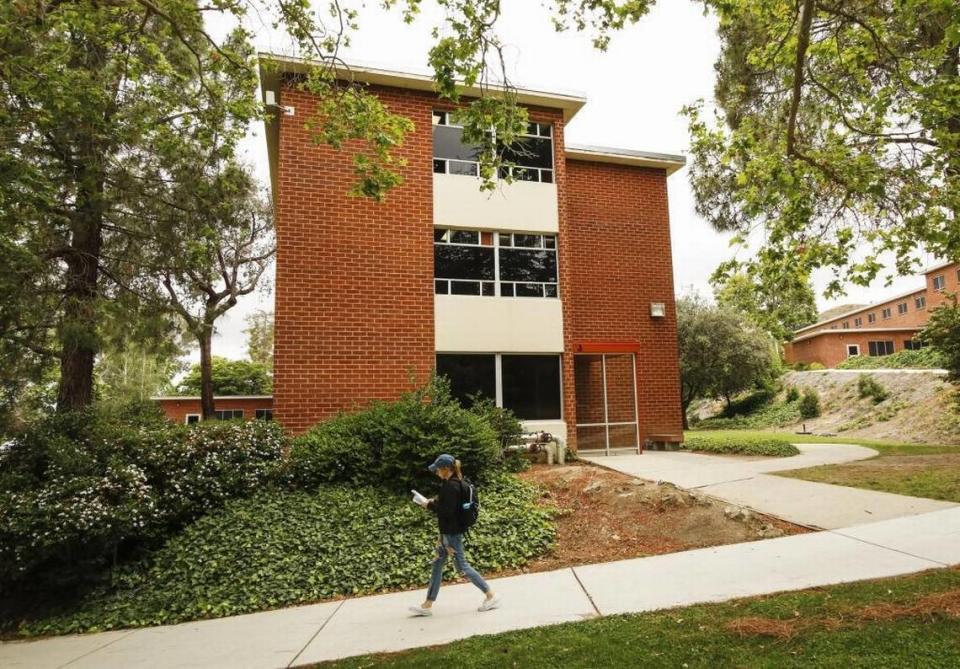
June 26, 1996: Amid a flurry of criticism from the Smart family and friends, University Police Chief Tom Mitchell asks San Luis Obispo County Sheriff Ed Williams to assist in the investigation. Williams obliges and the Sheriff’s Office takes over the case.
June 29-30, 1996: Nearly 400 volunteers turn out for a massive campus search. Cold Canyon Landfill in rural San Luis Obispo is also searched at an expense to the university of $16,000. Dogs trained to search for human remains are brought in to search for clues. Four dogs independently react to Flores’ dorm room at Santa Lucia Hall. Dogs also react to his stripped mattress.
July 17, 1996: Sheriff’s Office investigators search Flores’ Arroyo Grande home. The search doesn’t yield any clues to Smart’s whereabouts.
July 19, 1996: Employees with San Luis Obispo’s Lininger Construction install a billboard on Highway 101, a daily reminder of Smart’s disappearance.
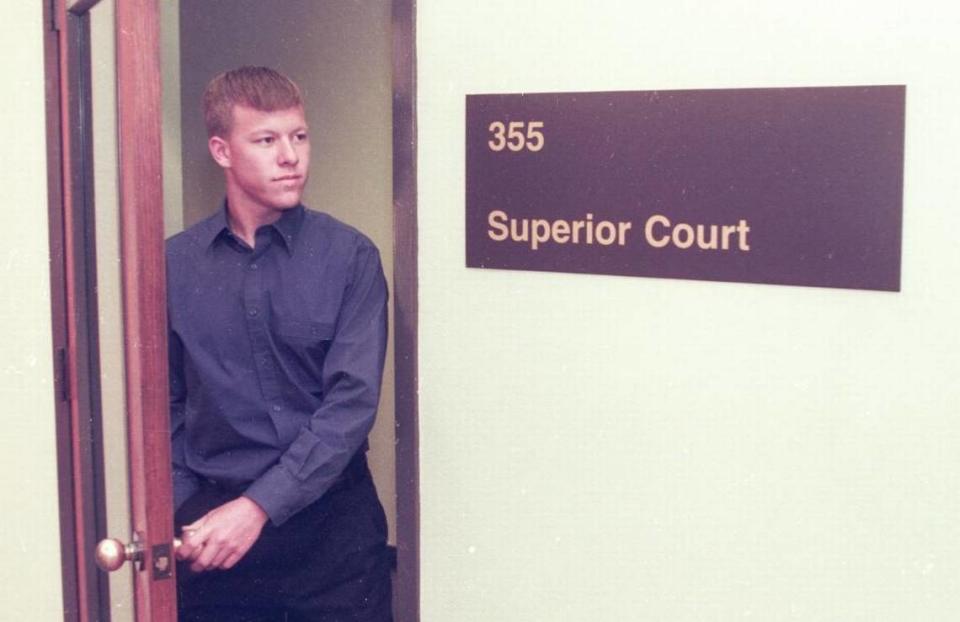
Oct. 15, 1996: In a rare move, prosecutors subpoena people to testify before the county grand jury in the case of the missing Cal Poly student. Among those called are Flores and his parents, Ruben and Susan Flores.
Nov. 26, 1996: Stan and Denise Smart file a $40 million wrongful death lawsuit against Paul Flores. The lawsuit — which remains ongoing — alleges that Flores murdered their daughter at Cal Poly. The Smarts later add Cal Poly as a defendant, alleging campus officials failed to keep their daughter safe. A San Luis Obispo Superior Court judge initially dismisses the university from the complaint, but gave the Smarts a second chance to prove their case. The university appealed and is awaiting the judge’s final decision.
Jan. 24, 1997: The Smarts’ Arroyo Grande attorney, James Murphy, begins interviewing potential witnesses in the civil suit. Ultimately, no substantial revelations come out of the depositions. The Smarts subpoena all law enforcement reports and files in the case of their missing daughter. The named agencies — Cal Poly University Police, the Sheriff’s Office, and the District Attorney’s Office — continue to fight the request in court in a hearing each year, due to the ongoing and criminal nature of the missing persons investigation.
Feb. 21, 1997: California Gov. Pete Wilson offers a $50,000 reward for any information leading to an arrest and conviction in the case of Kristin Smart. The offer boosts the total reward to $75,000.
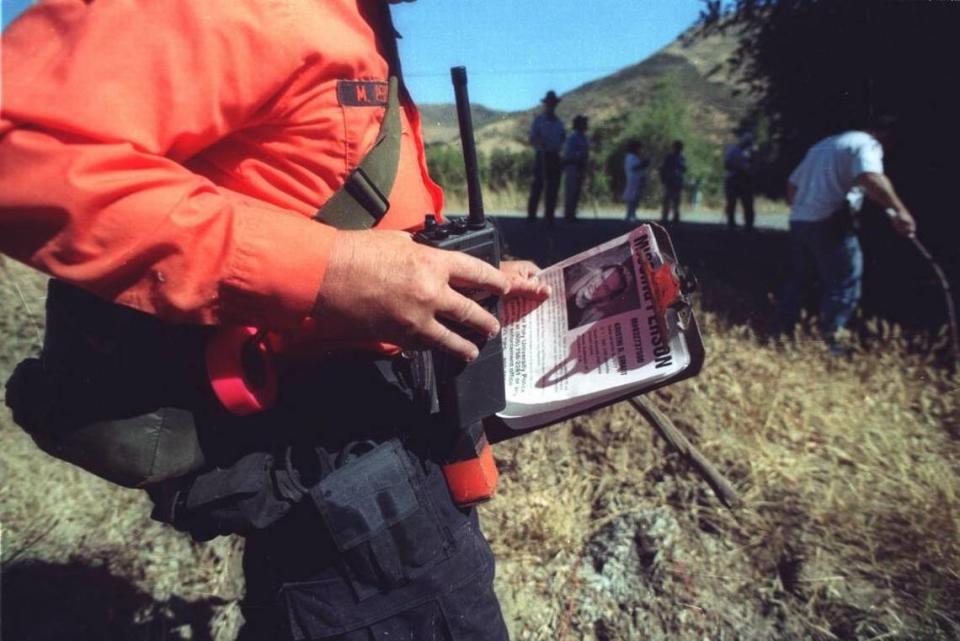
March 4, 1997: Murphy, the Smarts’ attorney, initiates a search of an Arroyo Grande rental property owned by Flores’ parents. The search fails to turn up any new leads in the case.
April 13, 1997: A fundraiser to help with the Smarts’ legal bills draws roughly 200 people in Arroyo Grande.
May 23, 1997: Sheriff Williams states “There are no other suspects” in the case besides Paul Flores.
May 8, 1999: San Luis Obispo County Sheriff Pat Hedges asks for the FBI’s assistance in the investigation. Sheriff’s deputies sift through dirt around Paul Flores’ old Santa Lucia Hall dorm. Hedges announced that no new evidence had been found at the site. FBI agents interview hundreds of Cal Poly students and staff.
Aug. 12, 1998: Gov. Wilson signs the Kristin Smart Campus Safety Act of 1998 into law. The law requires universities to contact law enforcement when violent crimes occur on campus.
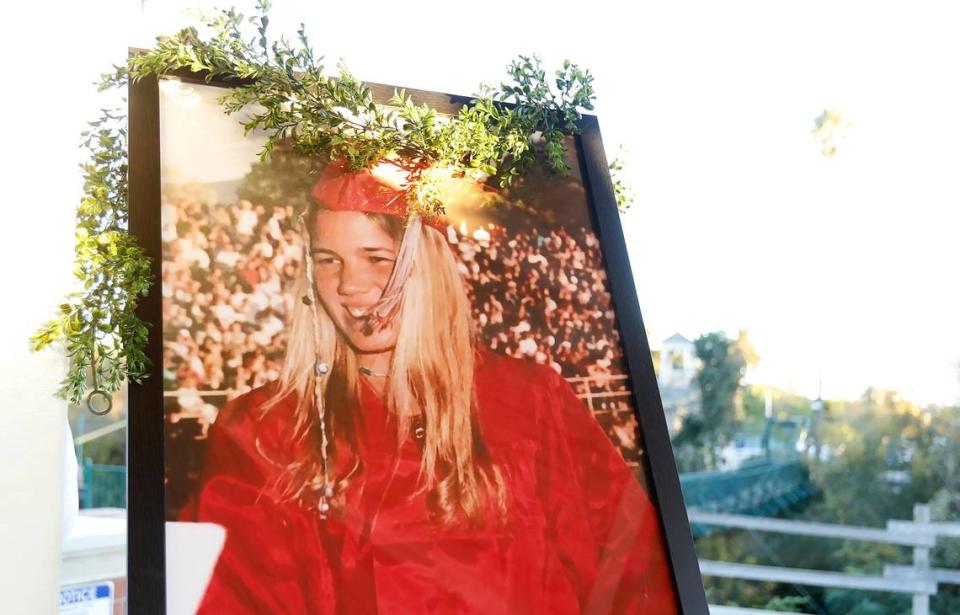
May 25, 2002: Kristin Smart is declared legally dead.
May 24, 2016: On the 20th anniversary of Kristin Smart’s disappearance, the Smart family issues a statement saying: “She was a girl with dreams and visions for the future. We plan to find a way for them to live on.”
Sept. 6, 2016: San Luis Obispo County Sheriff Ian Parkinson announces that a new lead “strongly suggests” Smart’s remains may be buried on a hillside on the Cal Poly campus near the Cal Poly “P” that had been searched by about 400 volunteers in June 1996. A joint Sheriff’s Office-FBI excavation takes place over five days. The agencies sift through approximately 20,000 cubic feet of dirt, taking away bones and a possible “item of interest” to a facility out of the county for analysis. The bones are later revealed to be animal bones.
May 28, 2017: The Smart family creates a website, kristinsmart.org, where people, businesses and other organizations can donate to a nonprofit, tax-exempt scholarship fund for women seeking degrees in law enforcement, forensic science or architecture.
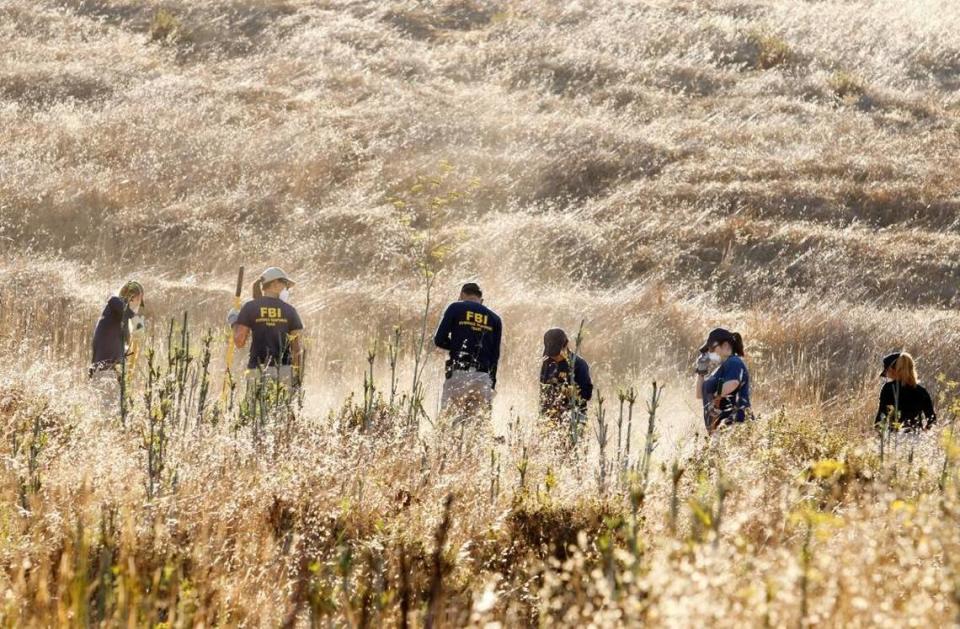
Sept. 6, 2017: A year after the Cal Poly excavation, the Sheriff’s Office calls the effort “beneficial,” but hasn’t released any further information since.
Sept. 25, 2019: Santa Maria resident Chris Lambert launches Your Own Backyard, a podcast devoted to Kristin Smart’s disappearance. The podcast generates massive public interest in and outside San Luis Obispo County.
Nov. 17, 2019: A large crowd gathers for a public candlelight vigil in Arroyo Grande.
Jan. 18, 2020: The Stockton Record publishes an article based on a reported interview with Denise Smart, who told a reporter she was told by “the FBI” that a new development in the case was imminent and to “be ready.” The story goes viral.
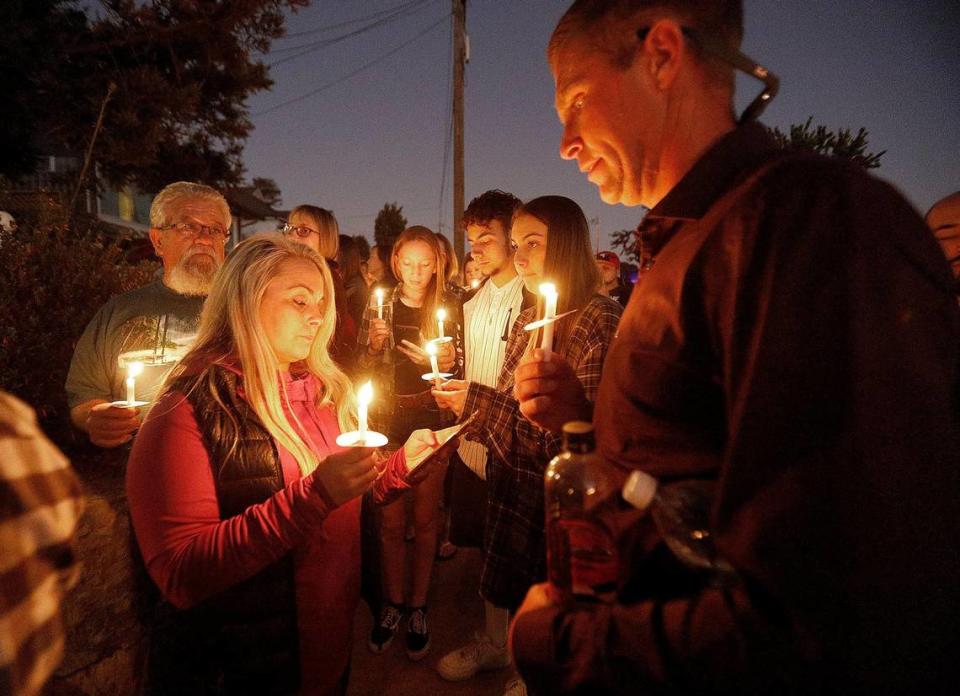
Jan. 22, 2020: Following an inundation of public and media requests for more information, a spokesman hired by the Smart family clarifies that the information shared with The Stockton Record came from a “former FBI agent,” and not someone associated with the investigation. The family says that no new developments are expected to be announced in the near future, but that the Sheriff’s Office, not the FBI, would be making any such announcement.
Jan. 29, 2020: The Sheriff’s Office announces that, since 2011, it has served 18 search warrants, conducted physical evidence searches at nine locations, submitted 37 evidence items from the early days of the case for modern DNA testing, recovered 140 new items of evidence, including two trucks that belonged to members of the Flores family in 1996. In addition, the agency says it has conducted 91 in-person interviews, written 364 supplemental reports related to the case and spent approximately $62,000 in investigative expenses during this time.
Feb. 5, 2020: Sheriff’s officials and FBI agents search the home of Susan Flores in Arroyo Grande and the home of Paul Flores in San Pedro. One additional property in San Luis Obispo County and another in Washington State are also searched. Officials do not say why they searched the properties.

